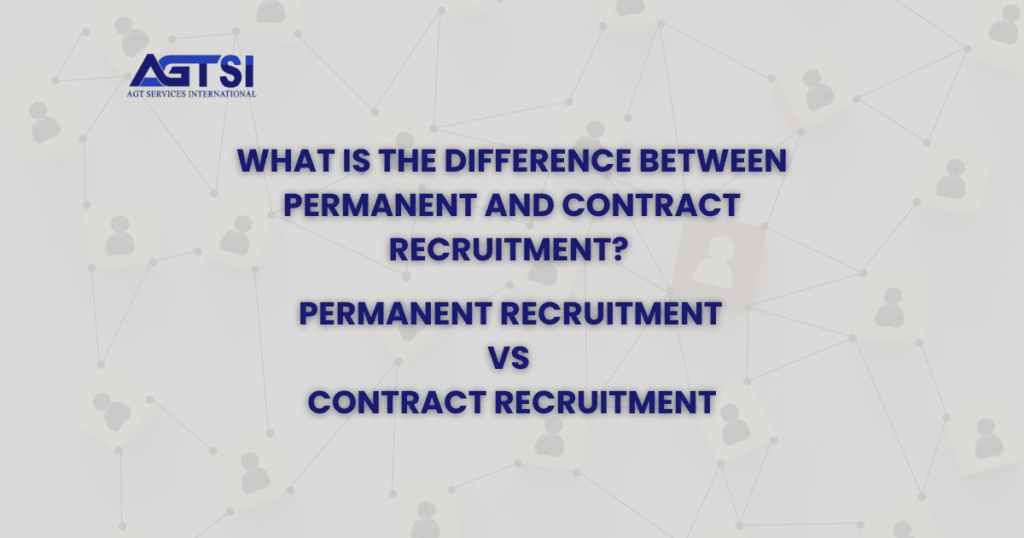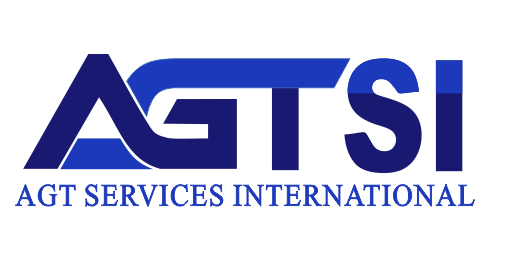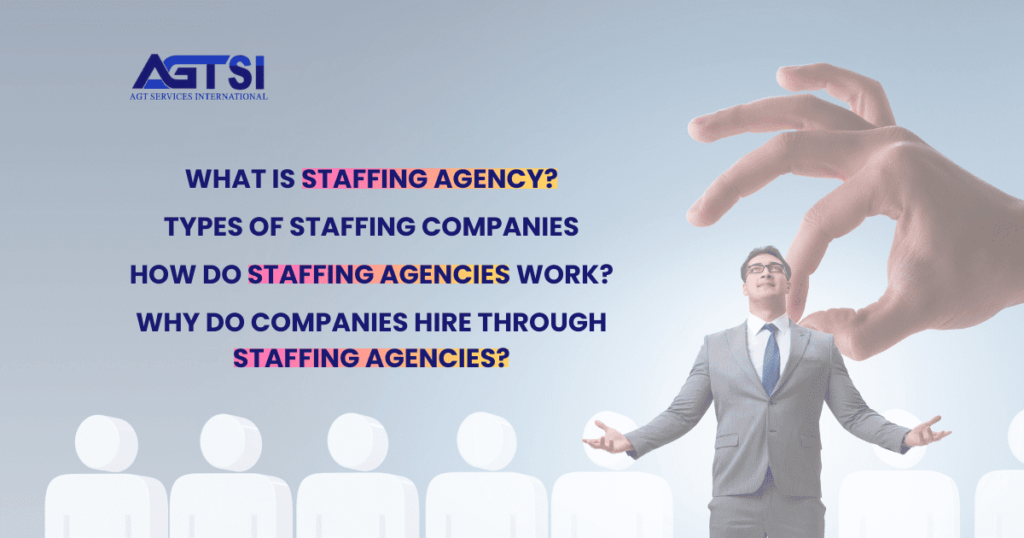Introduction:
Beginning the hiring journey places organizations in the position of making crucial decisions, particularly when it comes to choosing between permanent and contract recruitment. In this thorough exploration, we will specifically look at permanent recruitment, breaking down its core aspects, examining the differences between permanent and contract recruitment, and understanding the common practices adopted by companies.
What Does Permanent Recruitment Mean? Direct Hiring Exactly
Alright, let’s simplify the whole permanent recruitment thing. Imagine it as the original (OG) employment model – the classic way companies hire people. It’s like when you sign up for a job, and there’s no time limit on how long you’ll be there. It’s the real deal, no strings attached, and it creates a stable and loyal team.
Now, if we want to talk about it in a more casual way, it’s as if a company sends a message to a worker, saying, “Hey, want to be part of our team forever? No strings attached, just good vibes, workplace benefits, and no sudden breakups allowed!”
So, here’s the deal – experience the classic way of hiring! Choose permanent recruitment for a direct job without a fixed end date. It’s like comparing a classic love story to a modern rom-com – both are cool, but the OG always has that special touch.
Permanent Recruitment Historical Perspective:
Let’s journey back in time together. In the old days, permanent recruitment was the go-to, offering workers protection, clear layoff rules, and extra benefits like pensions and paid time off. But wait, things get interesting! As the 20th century progressed, contract workers entered the scene, handling short-term jobs and skill shortages. It was a bit like a revolution – less strict, more adaptable. Sure, they didn’t get all the perks, but the freedom they enjoyed? Absolutely priceless.
Information Source: Perelson.com
Evolution in Response to Technological Advances:
Technological progress sped up how things change, showing a big gap in skills for many jobs. While the need for full-time jobs continued, businesses started using temporary staff more often to quickly fill positions. Because of the skills gap and the desire for flexibility, many workers chose to do contract jobs.
Trends in Permanent Recruitment:
Permanent employees are like the main support of a company’s workforce, but hiring contractors has become more popular. This is because of skill gaps in various jobs, and contracting gives professionals more flexibility and chances to work on different projects. Still, new rules, like IR35 in the UK, and looking closely at how taxes work for contractors, have made people rethink how contracting should be done.
Advantages and Disadvantages of Permanent Recruitment:
Creating a strong team for a company requires smart choices about hiring people. Permanent recruitment, which is often picked by companies with steady needs, has both good and not-so-good sides. Let’s take a closer look at these, using ideas from two different viewpoints.
Advantages of Permanent Recruitment:
1. Skill Retention and Stability
Permanent employees contribute to long-term company growth. They foster stability, loyalty, and efficiency within teams.
2. Company Growth Alignment
Permanent employees are more likely to align with the company’s growth and values.
3. Efficient Workforce Management
Permanent staff seamlessly covers for colleagues, ensuring efficient workforce management.
4. Longevity
Committing to a team member on a permanent basis allows for long-term knowledge building. Employees can advance through the company hierarchy, becoming integral to business growth.

5. Higher Return on Training Investment
Permanent hires, sticking around longer, ensure a higher return on training and upskilling investments.
6. Loyalty to Business
Longer employment fosters loyalty, contributing to an engaged company culture.
7. Higher Caliber of Candidate Selection
Permanent recruitment provides access to a higher calibre of candidates, crucial in a competitive labor market.
8. Temp-to-Perm Option
Offering a trial period through temp-to-perm allows assessing if the employee is the right fit.
Exploring the Drawbacks of Permanent Recruitment/Common Disadvantages Highlighted:
1. Higher Operational Costs
Hiring permanent employees brings extra costs for companies. They have to pay for things like health insurance, pensions, and paid leave. These added expenses can be tough for businesses, especially if their finances change a lot. It’s like having to manage a higher bill, making it a challenge for companies that might not always have a lot of money.
2. Difficulty in Termination
Concluding permanent contracts poses challenges. They underscore the requirement for an extended notice period and the intricacies involved in ending prolonged job commitments. This not only increases the workload for the company but may also introduce legal complexities..
3. Recruitment Challenges
Looking for people to join our team for a long time can be a bit tricky. It takes a lot of time, money, and effort. We have to do many interviews, tests, and check what others say about the person we want to hire. It’s a big job!

4. Attraction of General Skills
The next idea suggests that really skilled people might like jobs with set time limits, which means companies end up with employees who have more general skills from working within the company. This makes it hard for businesses to get the best people for long-term jobs when there are many companies competing for skilled workers.
5. Impact on Employee Retention
Sometimes, when employees have a long-term commitment to a job, they might start feeling like their skills aren’t as needed, and this could make them want a change. If they also have to work fewer hours, it might become a bit challenging for the company to keep these employees happy and stay with them for a long time.
What is Contract Recruitment?
Contract recruitment, also known as temporary staffing or hiring, encompasses a type of employment arrangement where individuals are brought on board by a company for a defined duration or specific project. This model involves an employment contract with a predetermined end date, and individuals work for the company for the specified period. This approach proves valuable when companies face short-term staffing needs, aim to complete specific projects, or seek to address temporary skill gaps without committing to long-term positions.

Moreover, contract recruitment is a solution that allows companies to engage individuals or agencies part-time or on a short-term basis to fulfill various staffing requirements. For instance, a company may opt to bring on a contract recruiter part-time to effectively address a specific hiring challenge and devise a tailored solution. This flexibility in employment arrangements ensures that organizations can efficiently manage their workforce, adapting to dynamic staffing recruitment needs without the long-term commitments associated with permanent positions.
What is the Difference Between Permanent and Contract Recruitment?
Let’s start by talking about two types of workers: permanent employees and contract employees. A permanent employee is someone who is hired directly by a company and has a specific job with set working hours. They have been with the company for an extended period. On the other hand, a contract employee, sometimes called a consultant or third-party worker, is hired for a certain time or project. The company decides to bring them in when they need extra help or have a temporary job to be done.

Permanent Recruitment vs Contract Recruitment
In the world of hiring people for jobs, there are two main options: permanent and contract recruitment. Knowing the differences between them is not just important; it’s essential for planning how you hire and run things every day. Let’s explore these ways of doing business and see how they compare.
The Business Model Comparison:
1. Permanent Recruitment
In the world of hiring people for long-term jobs, your job is to find and convince both companies and job seekers in your field. The challenge? You’re matching a worker with a job that lasts a long time, and you’re trying to get them to become an employee of the company you’re working for. You get paid a percentage of the worker’s yearly salary for making this match.
2. Contract Recruitment
Now, let’s look at contract recruitment. It involves steps like finding and persuading clients and professionals in your field. However, this time, the goal is to work on short-term projects. Professionals will finish one project and then move on to the next one. The earnings come from the profit made on the services provided by the contractor.
How Permanent and Contract Recruitment Making Money:
1. Permanent Recruitment
Here, you have two options for how you get paid. One way is when you only get paid if you successfully find someone for the job (that’s called “no cure, no pay”). The other way is when you charge fees at different steps of the hiring process, and it usually means you only work with one company at a time (that’s called a retainer).
2. Contract Recruitment
It’s all about the money you make from offering services, like a contractor’s work. But here’s the thing – it usually takes quite a bit of time, sometimes a year or even more, to see all the profit from a job placement.
Process Length and Dynamics:
1. Permanent Recruitment
The steps take longer (around 3 to 6 weeks) and involve careful decision-making. We move at a steady pace, giving us enough time to think through things carefully.
2. Contract Recruitment
It’s all about acting quickly! Things happen fast, with processes taking only 2 to 3 weeks. Making fast and straightforward decisions is super important in this situation. Being quick to react is the most important thing.
Scope and Responsibility:
1. Permanent Recruitment
Your job is essentially done once the candidate is placed. There’s minimal ongoing responsibility.
2. Contract Recruitment
You’re the intermediary throughout the contract’s duration, managing ongoing services and administrative tasks. More work, more responsibility.
Profitability and Cash Flow:
1. Permanent Recruitment
Quick profits, low investment. You invoice, you get paid – simple. Quick turnover.
2. Contract Recruitment
More profitable, but it takes time. Higher margins but delayed cashflow due to the intermediary role. Requires substantial back-office support.
Main Point of Contact:
1. Permanent Recruitment
You liaise with HR or recruitment managers, fostering a relationship built on trust and HR perspectives.
2. Contract Recruitment
Procurement becomes your primary contact, emphasizing cost optimization and a service-provider dynamic.
Benefits of Permanent Employment:
1. Designation and Stability
Employees with permanent positions have a specific job in the company, giving them a steady role and a clear path for their career..
2. Fixed Timings
Working hours for permanent employees are fixed, promoting a regular schedule.
3. Incremental Salary
Salary increments, bonuses, and other benefits are part of a permanent employee’s package.
4. Organizational Perks
Permanent employees often receive vouchers, gifts, and other perks as part of the company culture.
5. Career Growth
Companies invest in the career growth of permanent employees, providing certifications and training.
Benefits of Contract Recruitment:
1. Flexibility
Contractual employees have more flexibility in terms of working hours and project choices.
2. Diverse Experience
Temporary jobs let people work on different projects and use new technologies, helping them learn and get better at what they do.
3. Global Opportunities
Contractors may get opportunities to work on projects in different countries, broadening their experience.
4. Higher Earnings
Depending on the job, contract workers might earn more money, especially if they have special skills.
Quick Job Changes: Workers with contracts can easily move between different projects and discover new opportunities, creating a diverse and exciting work experience.
Permanent Recruitment Solutions: A Glimpse into Industry Practices:
The Role of Recruitment Agencies:
Recruiting permanent staff in-house can be time-consuming and costly. Permanent recruitment agencies offer several advantages, saving time, money, and providing access to a pool of highly trained candidates.
Engaging Permanent Talent:
Top companies highlight their brands and skills to draw in permanent talent. Take Rolls-Royce, for example. They focus on exciting tasks, good pay, flexible work choices, and lots of vacation time.
Innovation in Contracting Models:
To adapt to the changing work situations, new ways of hiring, like the Employed Contractor Model, have appeared. Recruitment agencies use this model for projects, making a connection between permanent and contract jobs.
Bridging the Gap: The Duality of Permanent and Contract Recruitment:
Holistic Recruitment Strategies:
Big companies use a combination of permanent and contract recruitment plans. This mix helps them find the right people when they need them. It’s like having stable team members for the long term and flexible ones for specific projects.
Regulatory Challenges:
Changes in rules, like IR35, show how important it is to know and adjust to new laws. It’s essential to find a balance between having a flexible team and following the rules to keep doing well.
Final Thoughts:
In the world of hiring people for jobs, there are two main types: permanent and contract recruitment. Permanent jobs are long-term and come with steady benefits, while contract roles offer flexibility. As the job market changes, companies need to be smart about using both types to find the right people. They should be open to new ideas but also remember the importance of keeping good employees for the long haul.



















